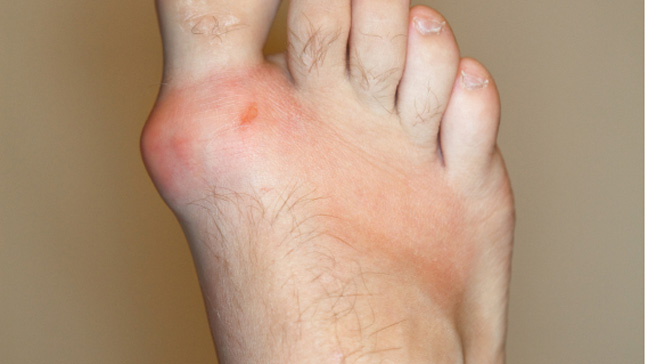Silent Killers
Whenever we think of a disease, we imagine a person who is
sick, lethargic, and bedridden. But there are few diseases which can show no
specific symptoms for a very long time i.e. they remain silent. The person
seems to be normal but if these conditions are not diagnosed early then they
have the potential to kill a person by many complications. So, these conditions
are logically called Silent Killers. Two
of the most common silent killers are:
1.
Diabetes
2.
Hypertension
In this blog I will be focusing on Diabetes, making
hypertension the topic of upcoming blog.
What is diabetes?
 |
| Image Credit: diabetes.co.uk |
In Greek, the word Diabetes means ‘fountain’. The condition
in human is logically named Diabetes because it causes frequent urination of
large volume of urine (Polyuria). Polyuria is caused by Diabetes
mellitus and Diabetes insipidus. Though these two diseases have similar name
and similar symptoms, they have completely different pathophysiology. In this
blog I will be writing about Diabetes mellitus. But before proceeding ahead,
let’s differentiate Diabetes mellitus from Diabetes insipidus. Diabetes
mellitus is a condition where there is Polyuria with chronically elevated blood
glucose; urine also contains glucose (the Latin meaning of mellitus is sweet). Diabetes insipidus on other hand doesn’t
involve elevated glucose level and has completely different mechanism (Latin meaning
of insipidus is lacking flavor).
How do I know if I have Diabetes Mellitus?
1.
Diabetes
is usually asymptomatic until complications develop. However, we can notice
Polyuria (frequent urination with large volume of urine), Polydipsia (increase
thirst). If these symptoms are seen and the blood glucose level is measured more
than 200 mg/dl then it is Diabetes.
2.
Since
symptoms may not be seen until very late, so screening is necessary. If you are
asymptomatic then you can have your fasting blood glucose level tested. Test
the blood glucose after 8 hours of fasting
Less than 100 mg/dl : Normal
100 to 125 mg/dl: Pre-Diabetes
More than 126mg/dl : Diabetes
3.
Since
glucose level is very high, Hemoglobin(Hb) in the RBC combines with glucose by
the process called glycosylation forming glycated hemoglobin (HbA1C). This
process does not even require a catalyst (enzyme).
HbA1C
less than 5.7% : Normal
HbA1C
between 5.7 to 6.4% : Pre-Diabetes
HbA1C
greater than 6.5%: Diabetes
Since RBC lives for 120 days. This
test shows the glucose level in blood for past 3-4 months and is used to
monitor therapy in Diabetic patient undergoing treatment.
How does Diabetes develop?
To explain Diabetes mellitus, I want to introduce the hormone
insulin. Pancreas is an exocrine as well as endocrine organ in our body.
Exocrine portion secrete digestive enzymes. Endocrine portion secrete hormones.
Alpha cell of endocrine pancreas secretes the hormone glucagon and beta cell of
endocrine pancreas secrete hormone insulin. Glucagon raises blood glucose level
whereas Insulin decreases blood glucose level. In Diabetes there is chronically
elevated blood glucose because of deficiency of Insulin; deficiency in either
amount of Insulin (Type I Diabetes) or the deficiency in effect of insulin (Type
II Diabetes Mellitus).
Type I Diabetes Mellitus
It is an autoimmune disorder where our own T lymphocytes
mediates destruction of beta cell of pancreas. This results in loss of insulin.
It is mostly a childhood disorder. Since there is lack of insulin, we can treat
it using insulin.
One of the main complications of Diabetes Mellitus Type I is
Diabetic Ketoacidosis. There is increase in glucose and ketone bodies in the
urine and blood. Since ketones have acidic properties, it leads to anion gap
metabolic acidosis. Acidosis leads to increase in plasma potassium and this can
cause abnormal rhythm of heart (arrhythmias). To manage increasing acidic
environment inside the body our body tries to eliminate acidic gas (CO2)
from the body. For this reason, the breathing rate increases
(hyperventilation). A special type of deep, labored breathing is seen known as
Kussmaul breathing. Ketones has fruity odor so we can smell fruity odor in
breath.
To manage acidosis (H+), phosphate (PO43-)
shifts into ECF (extra cellular fluid) but is excreted in urine with osmotic diuresis. Because we lose
phosphate, we can’t generate enough ATP (Adenosine triphosphate). Due to
loss of ATP, there can be muscle weakness. Respiratory muscle can get weak
leading to difficulty in respiration.
Note: Although there is increase in potassium level in blood, total potassium
in the body decreases because we are constantly losing potassium with frequent
urination. When we start insulin therapy, insulin shifts potassium backs to the
cell from the blood. This can cause decrease in potassium in the blood and we
may need to administer potassium as well along with insulin.
Type II Diabetes Mellitus
This is the most common form of Diabetes. It is more common
in adults however incidence is increasing in children also. This is caused due
to deficiency of effect of insulin. The receptor on which insulin binds to show
its effect is abnormal and resistant to insulin in this case. There is not any
problem with pancreas initially. Pancreas produce enough insulin required for
our body physiology but since insulin can’t exert its effect pancreas is
tricked into thinking that there is deficiency of insulin in the body and
produces more insulin but since insulin receptor is resistant to insulin it
still can’t exert its effect. Pancreas again produces more insulin and the
cycle goes on till pancreas gets overwhelmed and fail to function properly.
When this happens insulin level gets low. This shows that in Type II Diabetes
mellitus, the level of insulin is initially high but eventually low.
How does
insulin resistance develop?
This is not well understood but there are many studies suggesting
that the resistance is related to obesity. Fat cells (Adipocytes) secrete
TNF alpha. TNF alpha may activate an enzyme serine threonine kinase. For
insulin to show its action, its Tyrosine Kinase that has to be activated.
Resistance also shows positive association with family
history. Genetic predisposition is seen more in Type II Diabetes mellitus than
Type I Diabetes Mellitus. First degree relatives are at 2-3 times greater risk
of developing diabetes mellitus.
Complications of Diabetes Mellitus Type II
The
complications are related to one of two mechanism.
1. Amino acids in the protein combine
with glucose forming crosslinked protein known as “Advanced Glycosylation End
Products” (AGEs). This does not require an enzyme. AGE can cause damage to
large and small blood vessels.
2. The excess glucose in the blood can
be converted to Sorbitol by the enzyme Aldose reductase. Sorbitol being an
osmotic agent draws in fluid and causes osmotic damage in the areas it is
deposited.
Diabetic Macroangiopathy
(macro= large, Angio= blood vessel, Pathy= diseases)
AGE causes
atherosclerosis in the large vessel of heart, brain and legs. This leads to
Coronary artery diseases like Myocardial infarction and Angina pectoris. It can
also cause Stroke. Because of blocking of peripheral vessel in the leg, it can
cause pain in the leg and poor wound healing.
 |
| Image Credit: Britannica.com |
Diabetic Microangiopathy
(micro= small)
It commonly
occurs in kidney of Diabetics. AGE cause hyaline arteriosclerosis (thickening
of arterioles) in afferent as well as efferent arteriole of nephron (functional
unit of kidney). Arteriosclerosis of afferent arteriole is also seen in
hypertension. Arteriosclerosis of efferent arteriole is rarely seen except in
diabetes. If afferent arteriole is involved, blood can’t enter kidney, and this
can cause renal failure. If efferent arteriole is involved, blood cannot leave
kidney easily. This leads to hyperfiltration and filtration of protein as well.
We can find protein in the urine in this case which is normally absent.
Cataracts
Some tissues
in the body like muscles and adipose tissue do not uptake glucose from blood
without signals from insulin. However other tissues may uptake glucose without
insulin. Lens of eye, Schwann cells of peripheral nervous system and pericyte
of retina are few important tissues for our discussion here which do not
require insulin signal. Lens uptake glucose and converts to sorbitol. Sorbitol
draws water into the lens. This opacifies over time leading to cataract.
 |
| Image Credit: myeyesspecialist.com.sg |
Neuropathy
Sorbitol
accumulates in the Schwann cells and cause osmotic damage to Schwann cells
which are the myelinating cells of peripheral nerves. This leads to sensory
loss- loss of vibration sense and proprioception. There is impairment in the
sense of pain, light touch, temperature.
As we
discussed earlier that AGE can block peripheral vessel leading to delayed wound
healing. If neuropathy is added to that then we cant properly sense touch and
pain especially in the long nerves (nerves supplying legs). If there is
infection in the leg, patient may remain unaware and by the time it come to
attention there can be ulcer development in the leg and amputation as well in
some case. This is described as diabetic foot disease. For this reason,
for diabetics regular foot exam is recommended as a prevention.
Note: In Diabetic neuropathy the condition
is worse distally and better proximally. In Neuropathy due to Vitamin B12
deficiency, both extremities are equally affected.
Retinopathy
AGE can
deposit in capillary basement membrane causing hyaline arteriosclerosis.
Sorbitol can
deposit in pericyte (cell that wrap capillaries). This cause pericyte degeneration.
This increase chance of microaneurysms in the retina. These aneurysms can
rupture and cause blindness.
 |
| Image Credit: 2020vision4nh.org |
Acanthosis
nigricans
This is
hyper-pigmented plaques on skin classically seen in neck and axillae.
 |
| Image Credit: mbbch.com |
Prevention and Management Of Diabetes
Diabetes
can’t be completely cured. However it can be managed and prevented. Some of the
important measures for this are:
1. Maintain normal weight: Obesity is the main risk factor for
Diabetes. So, it is recommended to modify your lifestyle to reduce your weight.
One of my friends asked me that he has gained some weight and was concerned
about obesity. So I want to further elaborate this. Obesity can’t be determined
by weight alone. It requires height as well so that we can measure body mass
index (BMI)
BMI = Weight (in
Kg)
(Height)2 (in meter)
By
calculating BMI you can know where you stand.
 |
| Image Credit: everydayhealth.com |
Exercise:
Regular exercise
improves body’s use of insulin and helps to reduce fat as well.
Relaxation: Stress can raise blood pressure as
well as blood sugar. To manage this you can practice relaxation technique like
deep breathing and meditation.
Medications:
There are many oral
and subcutaneous medications available to manage diabetes.
Test
blood sugar time to time: If you are prediabetic then it can be cured by lifestyle modification and
diet planning. If you are diabetic and on continuous therapy, then your glucose
level may go down due to excessive use of insulin. This can be fatal. So, blood
glucose test is recommended.
In these
ways Diabetes can be managed. For furthermore drop a comment or concern your
doctor. I hope this was useful.









1 Comments
Sai ho bro
ReplyDelete